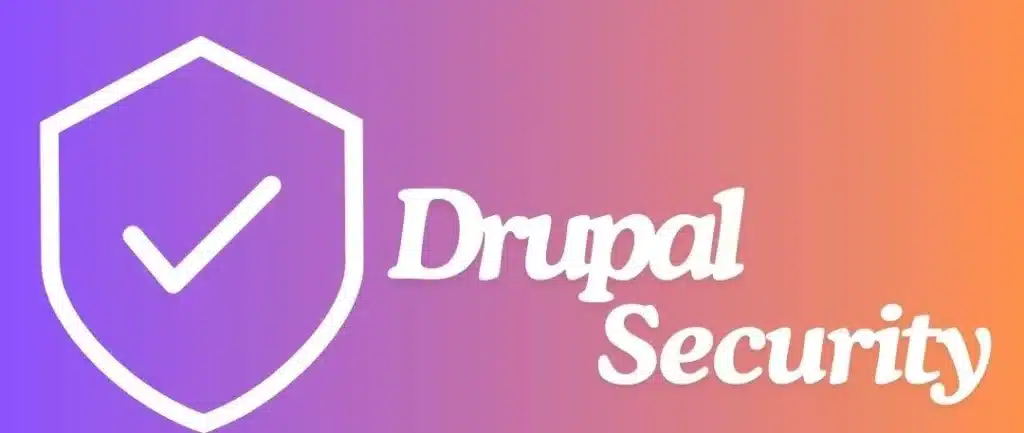
7 Drupal Security Best Practices in 2024 to Protect Your Site from Hackers!
Imagine that someone spent many hours creating the perfect Drupal website, only to have their hard work erased by a security breach. It’s a nightmare, though it can be prevented with proper precautions. When securing your Drupal website, it is not just about technology—it is about protecting your sweat, your users and your peace of mind. In this blog, we will take you through some essential Drupal security best practices for maintaining a secure site.
Table of Contents
1. Regular Updates and Patching
Core and Module Updates
It is important to update your Drupal core, contributed modules and themes regularly in order to maintain the security of your system. These updates usually contain critically important fixes addressing newly identified vulnerabilities.
Subscribe to Security Advisories: Subscribe to Drupal security advisories so that you are informed about new security releases.
Automate Updates: Automate updates using tools like Composer, which will ensure that you are on the latest secure versions every time.
For instance, Drupal released a significant security upgrade (SA-CORE-2022-005) in 2022 to address remote code execution vulnerabilities in many versions of the Drupal core. Applying this update immediately after release made sure that these sites were not exploited, thus elucidating why timely updates are necessary.
2. User Authentication and Permissions
Strong Password Policies
To prevent unauthorized access, strong password policies must be put in place. All users should abide by the following:
Minimum Length: Set a minimum of twelve characters for passwords.
Complexity: Include numbers, capital and small letters and special characters as a requirement for every password.
Regular Changes: Encourage the periodic change of passwords by users.
3. Two-Factor Authentication (2FA)
The use of two-factor authentication (2FA) as an additional website security measure can considerably mitigate the risk of hacked accounts. Visit your Drupal site and enable 2FA with modules like TFA.
Role-Based Access Control (RBAC)
Drupal’s built-in RBAC system enables you to set up permissions based on user roles. Apply least privilege principle in order for users only to have access they need to perform their duties.
One major financial institution experienced a security breach in 2021 because of weak password policies and lack 2FA. After putting in place strong password requirements and 2FA, there was a notable decrease in unauthorised access attempts.
4. Secure Configuration Settings
Configuration Management
For example, if you are developing using Drupal CMS ensure that the Website security configurations are well set up. Use this feature to export your configuration into code which can then be tracked back over versions control system such as git.
Disable Unnecessary Features
To minimize your site’s potential attack points, disable or delete any unused modules and themes. Modules not currently being supported can be a risk to security.
Secure File Permissions
Set the correct file permissions so that unauthorized persons cannot access them:
Files Directory: For sites/default/files directory, set it to 755/750.
Settings File: Set your settings.php file’s permissions to 444 for it to be protected.
In 2021, a major player in healthcare had its files accessed due to incorrectly securing their files’ permission. By reviewing and correcting the permissions of files, they ensured that sensitive patient data is safe from further breaches.
5. Web Application Firewall (WAF)
Implementing a Web Application Firewall (WAF), which filters and monitors HTTP traffic, may enhance website security. Take advantage of services such as Cloudflare or AWS WAF to protect Drupal-based websites from typical web threats.
In 2021, an e-learning institution adopted Cloudflare’s WAF after experiencing a series of distributed Denial of Service (DDoS) attacks on their Drupal site. This mechanism made sure that there were no interruptions when students needed to use the learning management system during critical periods.
6. Database Security
Secure Database Credentials
Safely store database credentials and avoid using predesigned user logins like root passwords. Use environment variables for managing sensitive information.
Database Backups
The database must be backed up at regular intervals and the backups should be kept safe. This can be made possible through automated scheduling of backup processes as this guarantees a quick recovery of your website in case of data loss.
A data breach took place during 2022 in an e-commerce platform due to unsecured database credentials. After securing the credentials and putting regular backups in place, it was possible to recover quickly from the incident while enhancing their security posture overall.
7. Monitoring and Logging
Real-Time Monitoring
Implement some sort of monitoring that allows you to detect any suspicious activities happening on your site. As such, tools such as New Relic and Splunk can give you important insights regarding performance and security of your website.
Log Management
Activate logging that will track user’s actions as well as system events. Regularly go over logs in order to determine if there are any security incidents occurring at this time and then react appropriately. Log management can also be improved with modules such as Syslog.
During 2022, real-time monitoring along with log management enabled a major retailer to detect and respond to a hacker’s attack within minutes thereby denying unauthorized access to customer records.
Regular Backups
Develop an all-inclusive backup strategy which involves backing up your site files and databases on regular basis. Store these backups offsite so as to cater for disasters resulting from physical destructions.
Disaster Recovery Plan
Develop a plan for disaster recovery that explains the measures to restore your website in case of a security breach or loss of data. Test your backup and recovery procedures at regular intervals to ensure they perform as anticipated.
In 2021, there was an attack on a major charitable organization by ransomware. Using their strong backup and disaster recovery strategy, they were able to get back up within hours without paying the ransom.
Some other instances that show why security is important
A national government website developed with Drupal encountered numerous hacking incidents in 2021. The site maintained its integrity and continued serving the citizens securely through strong RBAC, 2FA use, and regular module updates.
Spammers targeted an educational establishment’s Drupal site in 2022. To respond, IT tightened user permissions, activated WAFs, and enabled real-time monitoring tools. These steps helped minimize spam significantly while enhancing overall safety.
An e-commerce platform had outdated modules making it vulnerable to a data breach in 2022. They implemented an automatic update system after the incident with secure file permissions and routine backups which ensured that they are better defended against future threats.
Conclusion
Therefore, you must always work hard and stay watchful to secure your Drupal site. These are the best practices that will help you reduce the chances of security breaches and also protect your valuable information and users. You should know the current security trends and updates then be ready for any security threats on your website.
You May Also Like
